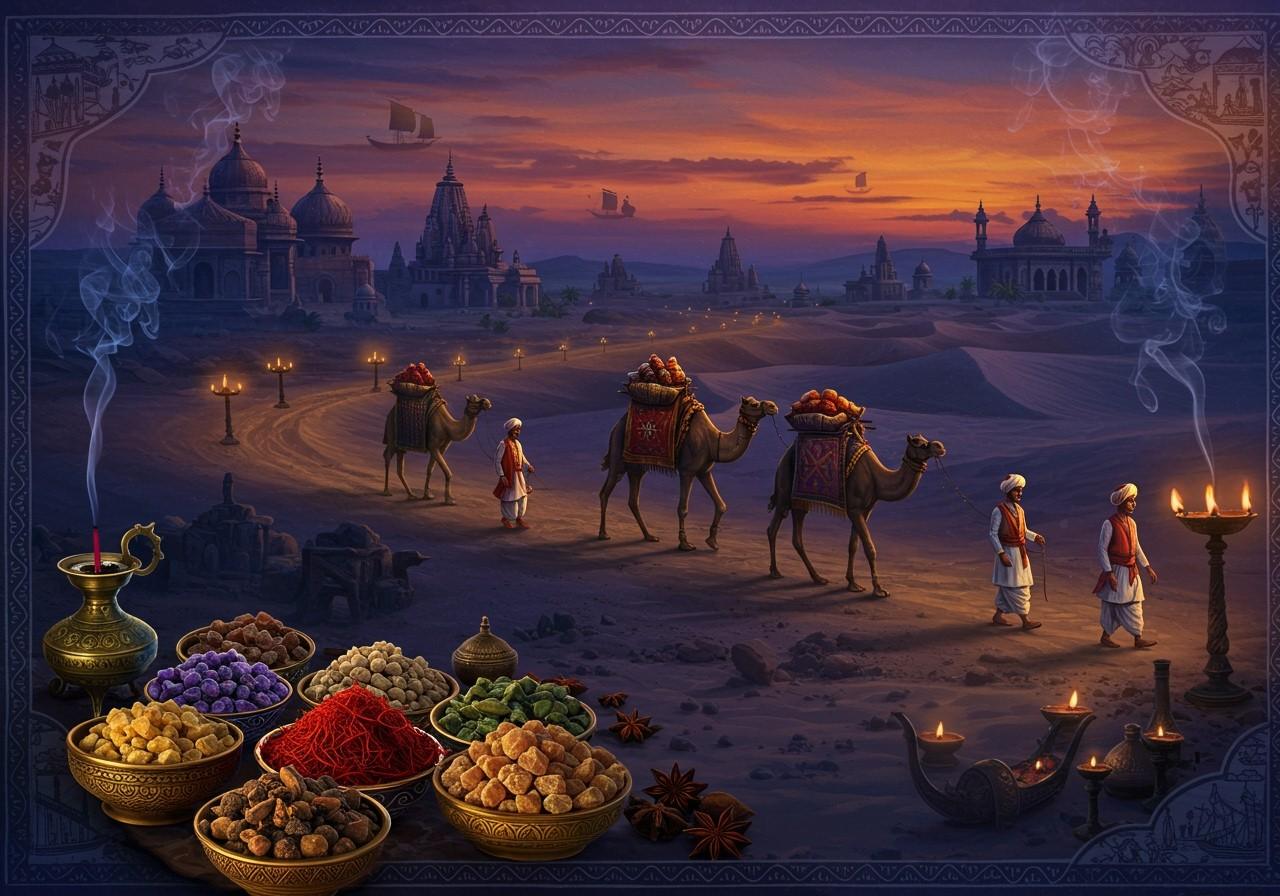
The Ancient Incense Route, often called the “Perfume Road,” was a pivotal trade network connecting diverse cultures and economies throughout history. This blog delves into its rich history, trade practices, and cultural impact. We’ll explore its origins, the key commodities traded, and the vast geographical area it spanned.
What Was the Incense Route?
The incense route comprised a network of ancient trade paths used to transport valuable incense and other luxury items. It flourished from the 3rd century BC to the 2nd century AD.
- Origin and Purpose: Emerging around the 7th century BCE, the route served primarily to transport frankincense and myrrh, essential for religious ceremonies, medicinal practices, and embalming. These fragrant resins played a vital role in the rituals and daily lives of numerous ancient societies.
- Key Players and Cultural Impact: The Nabataeans, an Arab people, controlled a significant portion of the trade, accumulating substantial wealth and influencing the cultural exchange along the route. This exchange facilitated the spread of ideas, technologies, and artistic styles across different civilizations.
- Route Network and Economic Significance: Stretching from the Arabian Peninsula to the Mediterranean, the route traversed challenging terrains, including deserts, mountains, and seas. Controlling this network provided substantial economic and political power, shaping the fortunes of empires and kingdoms.
- Archaeological Evidence: Discoveries of caravanserais (roadside inns) and trading posts offer valuable insights into the route’s historical importance and the logistics of ancient trade. These findings help us understand the scale and complexity of the incense trade.
Key Commodities of the Incense Route
Beyond incense, the route facilitated the trade of various luxury goods, reflecting the diverse demands and resources of the connected civilizations.
- Frankincense and Myrrh: Sourced from the Boswellia and Commiphora trees respectively, these resins were highly prized for their aromatic and medicinal properties. Their use in religious rituals further elevated their value and demand.
- Spices and Precious Materials: Spices like cinnamon and pepper, along with precious stones, gold, and textiles, were also transported along the route, catering to the luxurious tastes of elites and contributing to the overall economic value of the trade.
- Cultural Artifacts and Aromatics: The exchange of pottery, glassware, metalwork, and other artifacts reveals a dynamic exchange of artistic and cultural traditions. Essential oils and aromatic plants added another layer to the trade, serving practical and ceremonial purposes.
- Animal Products and Economic Exchange: Exotic animals and products like ivory and ostrich feathers were also traded, highlighting the diverse range of commodities exchanged. This vibrant trade significantly enriched the economies of the civilizations involved.
Geographical Span of the Incense Route
The incense route spanned a vast geographical area, connecting various civilizations across continents. The route prospered from the 3rd century BC to the 2nd century AD.
- Origins in Southern Arabia: Starting in present-day Yemen and Oman, where frankincense and myrrh trees thrived, the route extended outwards, connecting the Arabian Peninsula with the wider world.
- Key Cities and Desert Crossings: Cities like Shabwah and Qana served as crucial starting points, while caravans traversed the Arabian deserts, navigating challenging terrains and relying on oases and trade hubs like Petra.
- Red Sea Ports and Mediterranean Terminals: Reaching Red Sea ports like Aqaba and Leuke Kome, goods were shipped to Egypt and other Mediterranean destinations. Major terminals like Gaza and Alexandria facilitated distribution across the Roman Empire.
- Northward Extensions and Cultural Integration: The route extended north to Damascus and Palmyra, linking with the Silk Road and further expanding trade with Asia. This extensive network facilitated cultural diffusion, including the spread of languages, religions, and technologies.
Connecting with Ancient Incense Traditions through Poojn.in
Poojn.in, India’s leading online store for cultural goods and services, offers a wide selection of authentic agarbatti (incense sticks), dhoop sticks, and other traditional incense products. Experience the rich spiritual heritage of India with our carefully curated collection, featuring traditional fragrances used in temples and homes for centuries. Explore our range of pure sandalwood agarbatti, natural floral incense, and premium loban and guggul dhoop.
At Poojn.in, we prioritize quality and authenticity. Our agarbattis are crafted using natural ingredients and traditional methods, ensuring a pure and aromatic experience that connects you to India’s spiritual heritage.
The Lasting Legacy of the Incense Route
The Ancient Incense Route stands as a testament to human ingenuity and interconnectedness. More than just a trade route, it served as a cultural bridge, fostering exchange and prosperity. Its legacy continues to resonate today, reminding us of the enduring power of trade and cultural exchange.


